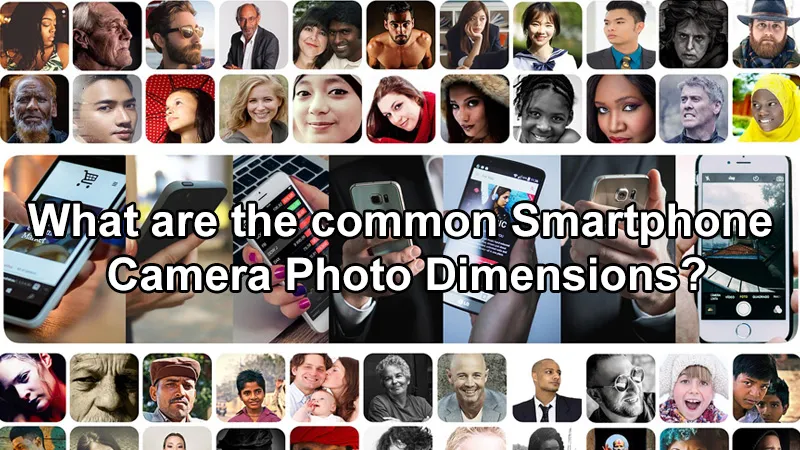The dimensions of photos taken with smartphone cameras might differ in accordance with the manufacturing and the model of the device, as well as the camera settings used by the user. However, here are some common photo dimensions for smartphone cameras:
- 4:3 aspect ratio: 3264 x 2448 pixels (8 megapixels)
- 16:9 aspect ratio: 4128 x 2322 pixels (9.6 megapixels)
- 1:1 aspect ratio (square): 2448 x 2448 pixels (6 megapixels)
Some smartphones offer higher resolution options, including 12 or 48 megapixels, which can end up in larger photo dimensions. Additionally, some phones may suggest different aspect ratios or permit users to regulate the resolution and dimensions of their photos manually.
What Size Are Smartphone Photos?
The size of smartphone photos can vary depending on the resolution and quality settings used by the camera, as well as the make and model of the device. However, as a rough estimate, a typical smartphone photo can range from 1 to 10 megabytes in file size.
For example, a photo taken with an 8-megapixel camera at medium-quality settings can be around 2 to 3 megabytes in size, while a photo taken with a 12-megapixel camera at high-quality settings can be around 5 to 6 megabytes in size. In addition, some newer smartphones with high-resolution cameras can produce even larger file sizes for photos.
It’s important to note that the file size of a photo can also be affected by factors such as image compression, editing, and storage format. For example, compressed or edited photos may have smaller file sizes, while photos stored in uncompressed or high-quality formats like RAW may have larger file sizes.
What are the factors involved in the size of Smartphone Photos?
The size of smartphone photos is determined by several factors, including:
- Megapixels: The higher the number of megapixels in a camera, the larger the photo size. This is because more megapixels mean more pixels, translating to more data and larger file sizes.
- Compression: Most smartphone cameras use image compression to reduce the size of photos. Compression reduces the amount of data in the photo file, but it can also reduce the quality of the image.
- Format: The format of the photo can also affect its size. For example, JPEG files are typically smaller than RAW files, which contain more data and produce higher-quality images.
- Aspect ratio: The photo’s aspect ratio (the ratio of its width to its height) can also affect its size. Photos with a 4:3 aspect ratio are typically larger than those with a 16:9 or 1:1 aspect ratio.
- Camera settings: The camera settings used by the user, such as resolution, HDR, and other effects, can also affect the size of the photo. Higher resolution or more effects will generally result in larger files.
- Duration: The length of time the shutter stays open, called the shutter speed, can also affect the size of the photo. Longer exposures will result in larger file sizes.
Hence, the size of a smartphone photo is influenced by a combination of these factors and can greatly differ depending on the model of the device and the camera settings used by the user.

